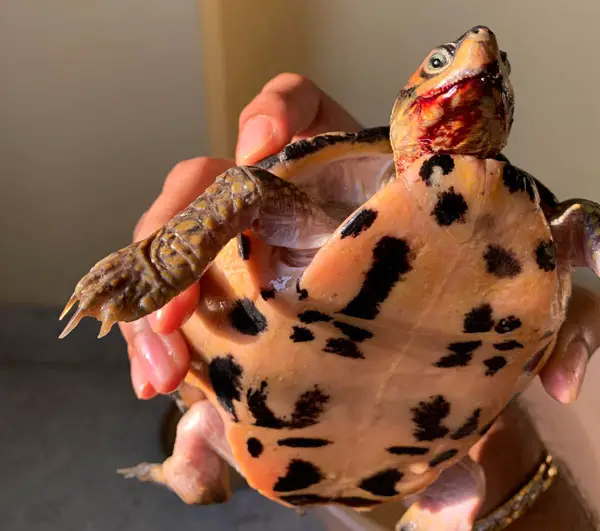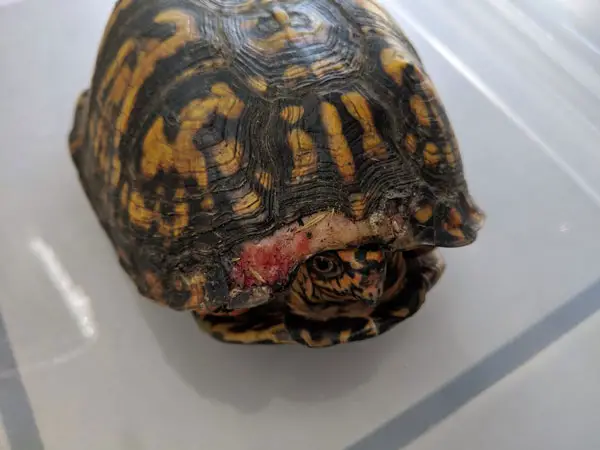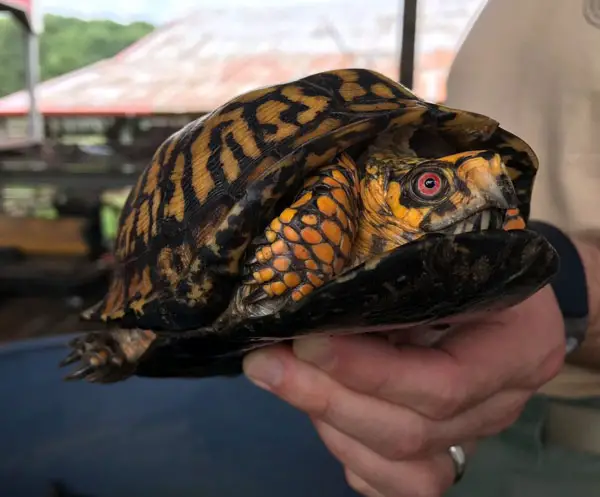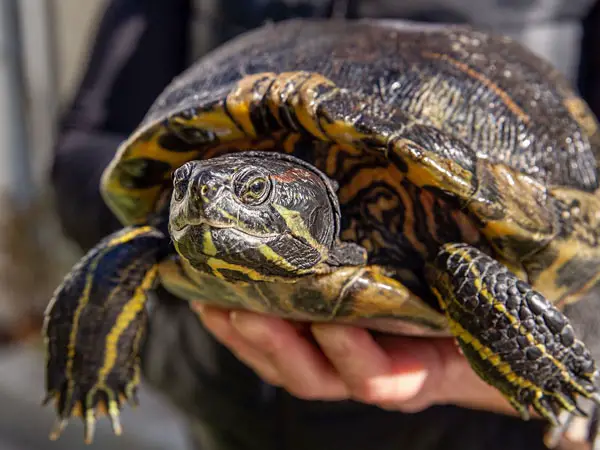Turtle Bleeding From Mouth, Tail, Or Nose? Here’s How To Help
Even with their solid, protective shell, turtles can bleed from different parts of the body. Including the exterior, ears, and limbs. This may happen due to an internal or external injury.
How to help when a turtle is bleeding from its mouth, tail, or nose? The best way to help your turtle if it’s bleeding from the mouth, tail, or nose is to seek medical treatment. But before your turtle receives professional help, you should first try to stop the bleeding. And if the injury is external, clean the wound, bandage it, and let the turtle rest.
Want to know more? Here is a step-by-step guide to help your bleeding turtle and everything else you need to know about the bleeding.
Turtle Bleeding From Mouth, Tail, Or Nose? Here’s How To Help
Contents
You must first seek medical attention so the turtle can get a physical examination and blood tests. However, if the vet is unavailable immediately, you may have to perform a little first aid yourself. And here are steps on how to go about it.

Step 1: Keep the turtle comfortable
Begin with removing the aquatic turtle from the water tank. Then, place the turtle in a warm and comfortable place before checking the entire body for injuries.
One of the best places to put the aquatic turtle is in a box lined with some paper towels or clean towels. Your turtle must stay warm to speed up the healing process.
Step 2: Stop the bleeding
Get sterile gauze or a clean, soft cloth and gently press it on the turtle’s tail or nose at the spot where it is bleeding. This will help induce clotting and stop the bleeding temporarily.

Step 3: Clean the wound
Once the bleeding has temporarily ceased, clean the bleeding spot with a sterile saline solution. You could also use hydrogen peroxide and water or dilute betadine, depending on what you have.
Step 4: Cover the wound
Lastly, get gauze bandages and medical-grade adhesive. Then bandage the wounded spot securely. You could also use a tail guard. Next, put your turtle back in a clean and not dirty water tank to ensure it stays hydrated.
If the bleeding is in the mouth or nose, try looking for any foreign objects inside. However, if none, simply get your injured turtle medical care immediately. This is because the bleeding could be internal, caused by bacterial infections. And in this case, the vet will prescribe antibiotic therapy.
That said, if the bleeding is not severe and your injured turtle is still active, it may go away on its own. Therefore, a vet visit may not be necessary. You just need to keep a close eye on your pet, administer fluid therapy, and let it rest. And in the meantime, you could give your turtle warm soakings at least 3 times a day to keep it hydrated.
Why Is Turtle Bleeding From the Mouth, Tail, Or Nose?
If your pet turtle is bleeding from the tail, it could be because of an injury or cut. This could happen if your box turtle rubs its tailpiece against something spikey or rough. However, when the bleeding is from the mouth or nose, there are many causes like:

Internal injury
Sometimes, the bleeding in the mouth is due to an internal injury or mouth disease. This is likely to happen because of a fall and, in some cases, a shock to the head area.
Infection or disease
Additionally, bleeding from the nose or mouth could be due to an internal infection or disease of the respiratory tract. These infections are caused mainly by bacteria or fungi from poor water quality. Your turtle could also have gum disease, blister disease, or infectious stomatitis hence the bleeding.
Humidity levels
Most healthy turtle species, including the Eastern box, thrive in environments with 60-80% humidity. However, your turtle may experience a minor nosebleed if the humidity is too dry.
Bites
If keeping more than one pet turtle of opposite sexes, the bleeding from the nose could be because of a bite. Some turtle species may bite their opponent on the nose.
Foreign materials
A foreign object inside the nose of your turtle may also cause bleeding. The foreign material could also be in the respiratory tract, causing ulceration and bleeding via the mouth or nose.
How Long Does It Take For Turtles To Heal From the Bleeding?
In most cases, the bleeding may last just a few days and heal by itself with proper care at home and a healthy diet. However, this depends on factors like the severity of the bleeding, proper wound care, and the overall environment. For example, if your turtle is bleeding heavily, the healing may take over a week.

Your turtle’s environment during recovery can also determine how fast the pet heals. This is because stress can prevent your turtle’s immune response. That is why it is recommended to place the turtle in a warm and dark area, away from other pets.
Also read: Why Is My Turtle Always Hungry?
Can Turtles Die From Bleeding In The Mouth, Tail, Or Nose?
No. This is because, in most cases, the bleeding is usually caused by a minor injury. For instance, if the bleeding on the tail is a result of a bite. Also, bleeding from the nose due to humidity levels being too dry is not something to worry about.

However, sometimes, the bleeding could be due to respiratory diseases. In this case, your turtle could die from the bleeding. This may happen if the respiratory illness is not treated on time and is already in the advanced stages.
What Are the Do’s and Don’ts Of A Bleeding Turtle
When your injured turtle is bleeding from the mouth, tail, or nose, you could help him in many ways. Below are some of the dos and don’ts to keep in mind.

- Keep the turtle indoors to protect it from flies and gnats, easily attracted to the smell of blood.
- Do not apply cream or ointment to the injured spot. The balms may get inside your turtle’s mouth, nose, or eyes.
- Place the turtle in a warm place with temperatures ranging from 75 to 80 degrees Fahrenheit to speed up the healing process.
- Keep the injured turtle dry as you try to stop the bleeding by inducing clotting. Simply consider dry docking the turtle for several hours.
- Leave your bleeding turtle in silence. You should let your turtle stay in a quiet and dark room temporarily.
FAQs
In this section, we will respond to some frequently asked questions about turtles bleeding from the mouth, tail, or nose.
In most cases, this could be due to an external or internal injury. The injury may be caused by a bite, head fall, or the turtle bumping into something hard. It could also mean your turtle has a respiratory infection.
Yes, where the bleeding is nothing major. You just stop the bleeding and let the turtle get enough rest. However, if the bleeding is due to a respiratory illness, your turtle can only heal by taking antibiotics.
Related: Why Is My Turtle Not Basking?
Outro
For different reasons, a turtle can bleed from the mouth, tail, or nose. For instance, it could be because of an internal injury, a bite, low humidity levels, or a respiratory disease. So, the important thing is knowing how to help your turtle before receiving proper medical care.



